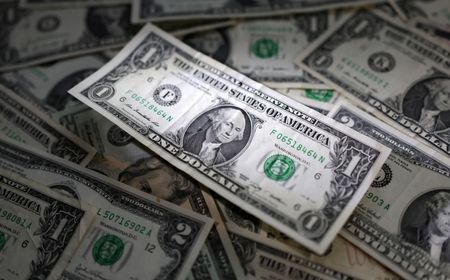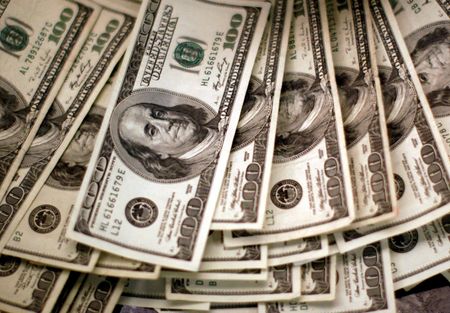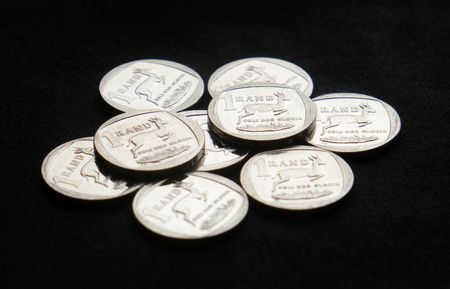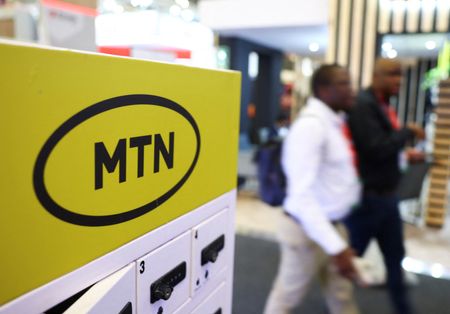By Hannah Lang
NEW YORK (Reuters) -The dollar rose in choppy trading on Friday after data showed that U.S. job growth slowed in January but that the unemployment rate edged down to 4.0%, giving the U.S. Federal Reserve cover to hold off cutting interest rates until at least June.
The U.S. currency was also boosted by comments from President Donald Trump that he plans to announce reciprocal tariffs on many countries next week, without specifying which countries.
The dollar index, which measures the U.S. currency against the yen, sterling and other peers, was last up 0.353% at 108.04. It was on track for a weekly fall after investor fears about a global trade war receded.
Nonfarm payrolls increased by 143,000 jobs last month after rising by an upwardly revised 307,000 in December, the Labor Department’s Bureau of Labor Statistics said in its closely watched employment report.
Economists had expected the survey to show 170,000 jobs added.
“We don’t really have a trend in nonfarm payrolls,” said Joseph Trevisani, senior analyst at FX Street. “We don’t have a declining trend, and we don’t really have a strengthening trend. It’s pretty much par for the course, so I don’t think you’re going to get a lot of market movement out of this.”
Investor nerves about global trade wars returned on Friday after Trump pledged to impose more tariffs as part of a broad effort that he said could also help solve U.S. budget problems.
Trump made the announcement during a meeting with visiting Japanese Prime Minister Shigeru Ishiba. He said auto tariffs remained on the table amid reports that the White House was weighing potential exemptions.
Britain’s pound was down 0.2% at $1.2413 after falling 0.54% on Thursday when the BoE lowered rates to 4.5% and said the UK economy would grow just 0.75% this year, half the previous forecast.
The pound fell as much as 1.1% just after the decision but regained some ground when BoE Governor Andrew Bailey told Bloomberg that markets should not read too much into a switch by some policymakers to vote for deeper rate cuts.
The euro was last down 0.49% at 1.0333.
YEN STRENGTH
The dollar fell 0.09 % against the yen to 151.365 after falling below 151 yen for the first time since Dec. 10 in early Asian trade on bets that the BOJ will raise rates more than previously expected this year, supported by wage data earlier this week.
Adding to the higher rate expectations were comments by Bank of Japan board member Naoki Tamura, one of the board’s most hawkish members, who said on Thursday the central bank must raise rates to at least 1% in the latter half of fiscal 2025.
“(Tamura) was a little bit more hawkish than before … I think there is less chance that the BOJ will delay a rate hike until September,” said Mizuho’s Yamamoto.
The early days of the Trump administration have kept investors on edge. Trump this week suspended planned tariff measures against Mexico and Canada at the last minute, but imposed additional 10% levies on imports from China, which quickly announced measures of its own on U.S. imports.
Meanwhile, U.S. Treasury Secretary Scott Bessent’s pledge to contain yields on 10-year Treasury notes signalled that the Fed may be out of the administration’s direct line of sight.
Bessent said in an interview with Fox Business on Wednesday that, while Trump wants lower interest rates, he will not ask the Fed to cut rates, and that he and the president were intently focused on the 10-year Treasury yield.
(Reporting by Hannah Lang in New York; additional reporting by Harry Robertson in London and Brigid Riley in Tokyo; editing by Shri Navaratnam, Kim Coghill, Aidan Lewis, Mark Heinrich, Jane Merriman and Nick Zieminski)











